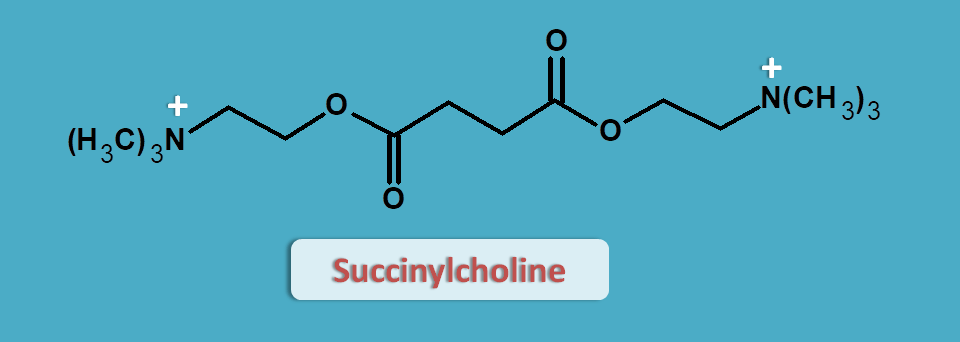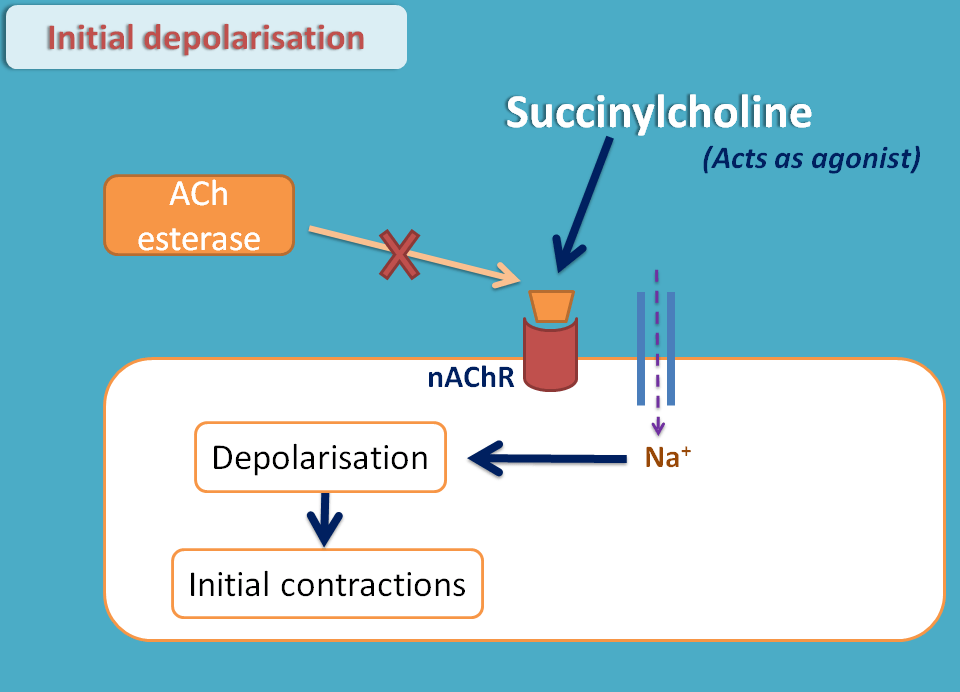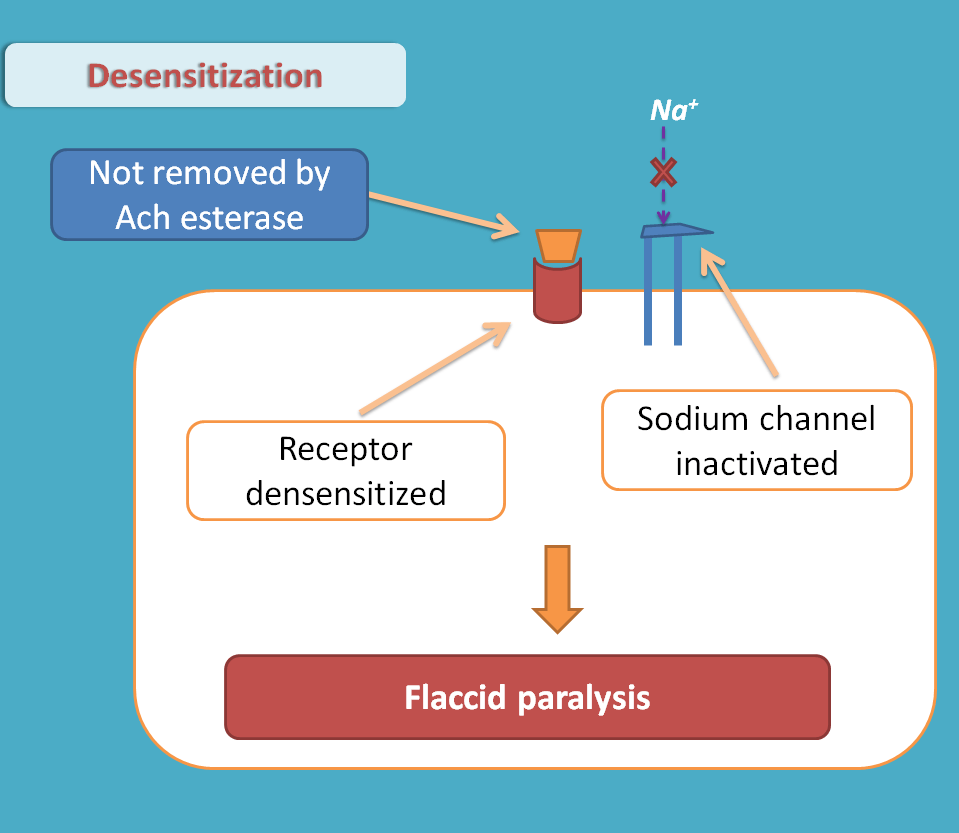Depolarising neuromscular blockers
Only one drug is available in this category i.e. succinylcholine. As its suffix indicating, it is quaternary ammonium compound.

How it acts?
It produces its action in two phases.
- Contraction phase
- Relaxation phase
Contraction phase
Suxamethonium acts as agonist on nicotinic acetylcholine receptors at neuromuscular junction thereby activates the receptors and open sodium channels leading to depolarisation. This results initial muscle fasciculations that’s why these drugs produce postoperative pain the patients.

The succinylcholine which binds to the nicotinic acetylcholine receptors can’t be removed by acetylcholinesterase hence produces long term binding leading to persistent depolarisation paving the way for the next phase of relaxation.
Relaxation phase
Ion channel like sodium exist in three stages like open, refractory and closed state. The ion channels which are in closed state are opened by any stimuli like receptor activation. They can’t be immediately go back to closed state at the end of the response instead converted in to refractory state and then into closed state.

They can respond to next stimuli when they are in closed state only. This time required for re-activation of ion channels is called as refractory period.

Depolarising neuromuscular blockers didn’t allow any time for sodium channels for this refractory period due to the persistent depolarisation. This finally results in complete inactivation of sodium channels.
At the same time, due to long term binding nicotinic acetylcholine receptors are desensitized and can’t respond normally to the acetylcholine producing flaccid paralysis.